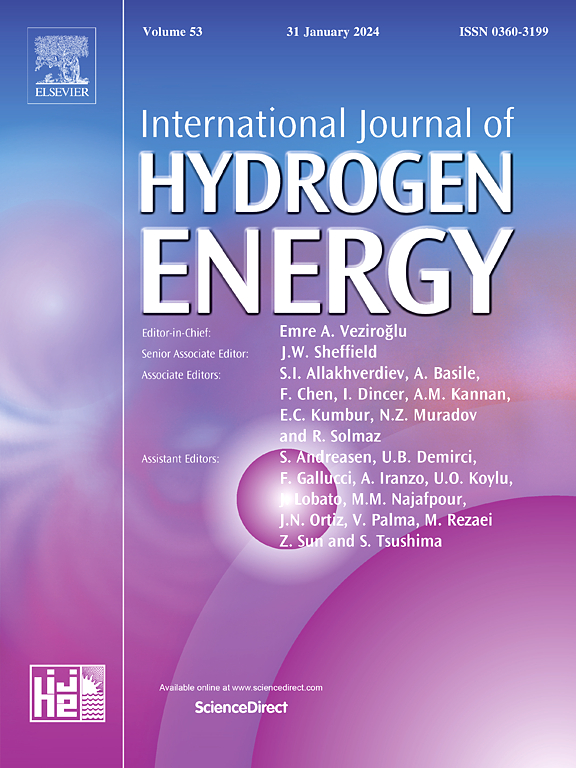Dual-function hydrogen selective catalytic reduction (H2-SCR): enabling NOx reduction to ammonia synthesis
IF 8.1
2区 工程技术
Q1 CHEMISTRY, PHYSICAL
引用次数: 0
Abstract
This review explores the growing promise of hydrogen-selective catalytic reduction (H2-SCR) as a dual-function technology for efficient NOx mitigation and sustainable ammonia (NH3) synthesis. Beyond its exceptional NOx conversion efficiency and minimal byproduct formation, H2-SCR offers a novel route for green NH3 generation via catalytic pathways that utilize renewable hydrogen. This emerging strategy challenges the conventional energy-intensive Haber-Bosch process by enabling decentralized and low-carbon NH3 production under in situ reaction conditions. The review presents an in-depth analysis of the fundamental principles of H2-SCR, recent advancements in catalyst design, key operational factors, and integration with existing emission control systems. Particular focus is given to the mechanistic insights underpinning NH3 formation during NOx reduction, emphasizing its role in circular nitrogen management. By aligning environmental remediation with sustainable fertilizer production, H2-SCR positions itself as a transformative solution in the context of global decarbonization goals and future green ammonia technologies.

双功能氢选择性催化还原(H2-SCR):使NOx还原为氨合成
这篇综述探讨了氢选择性催化还原(H2-SCR)作为一种有效减少氮氧化物和可持续合成氨(NH3)的双重功能技术的日益增长的前景。除了其卓越的氮氧化物转化效率和最小的副产物形成,H2-SCR通过利用可再生氢的催化途径为绿色NH3的产生提供了一条新的途径。这一新兴战略通过在原位反应条件下实现分散和低碳的NH3生产,挑战了传统的能源密集型Haber-Bosch工艺。本文对H2-SCR的基本原理、催化剂设计的最新进展、关键操作因素以及与现有排放控制系统的集成进行了深入分析。特别关注的是在NOx还原过程中NH3形成的机制见解,强调其在循环氮管理中的作用。通过将环境修复与可持续肥料生产相结合,H2-SCR将自己定位为全球脱碳目标和未来绿色氨技术背景下的变革性解决方案。
本文章由计算机程序翻译,如有差异,请以英文原文为准。
求助全文
约1分钟内获得全文
求助全文
来源期刊

International Journal of Hydrogen Energy
工程技术-环境科学
CiteScore
13.50
自引率
25.00%
发文量
3502
审稿时长
60 days
期刊介绍:
The objective of the International Journal of Hydrogen Energy is to facilitate the exchange of new ideas, technological advancements, and research findings in the field of Hydrogen Energy among scientists and engineers worldwide. This journal showcases original research, both analytical and experimental, covering various aspects of Hydrogen Energy. These include production, storage, transmission, utilization, enabling technologies, environmental impact, economic considerations, and global perspectives on hydrogen and its carriers such as NH3, CH4, alcohols, etc.
The utilization aspect encompasses various methods such as thermochemical (combustion), photochemical, electrochemical (fuel cells), and nuclear conversion of hydrogen, hydrogen isotopes, and hydrogen carriers into thermal, mechanical, and electrical energies. The applications of these energies can be found in transportation (including aerospace), industrial, commercial, and residential sectors.
 求助内容:
求助内容: 应助结果提醒方式:
应助结果提醒方式:


